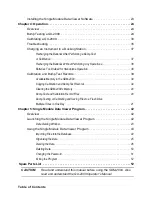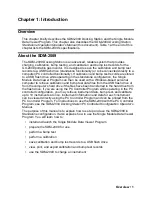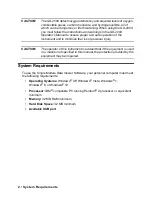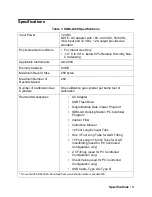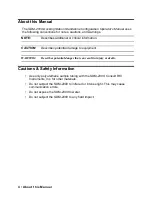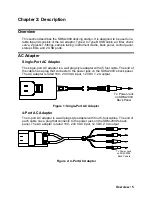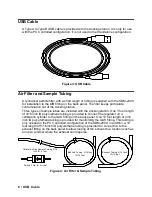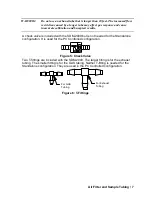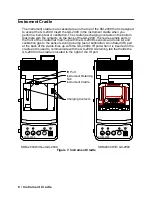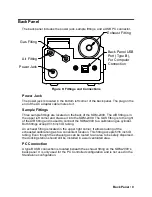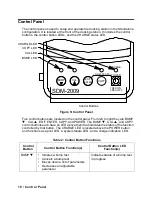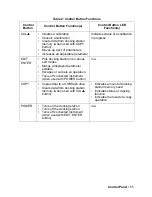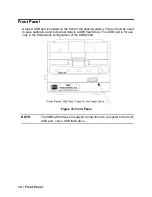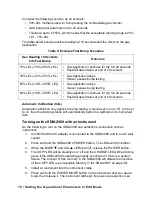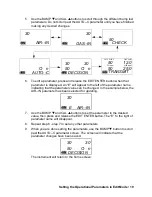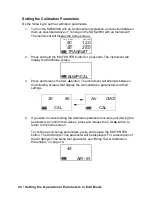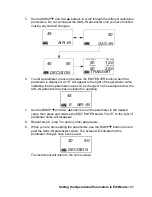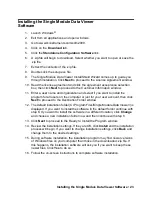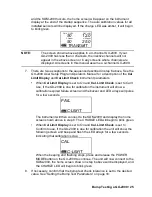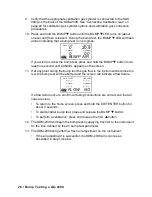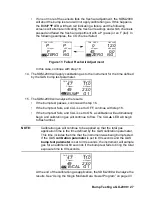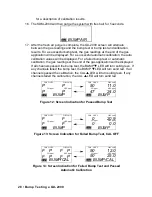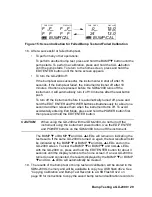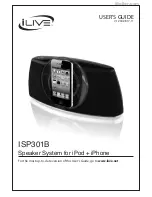
14 • Setting the Operational Parameters in Edit Mode
Setting the Operational Parameters
in Edit Mode
Once the hardware has been assembled, use Edit Mode to confirm or adjust the
bump test and calibration parameters before using the SDM-2009.
The bump test parameters define how long fresh air and calibration gas are applied to
an instrument during a bump test. They also define the tolerance used in determining
whether an instrument fails or passes a bump test and whether or not a calibration
automatically takes place if a bump test fails. The calibration parameters define how
long fresh air and calibration gas are applied to an instrument during a calibration.
The bump test and calibration parameters are saved in the SDM-2009’s memory. If a
parameter is changed with one particular instrument installed in the SDM-2009, the
change will be in effect for the bump test or calibration of any subsequent instruments
until the parameter is changed again.
Bump Test & Calibration Parameters
There are four bump test parameters and two calibration parameters. The two
calibration parameters, air sample time and calibration gas sample time, are also
bump test parameters. The parameters are described below. Table 3 below shows
the factory settings for the bump test and calibration parameters. If you wish to use
the factory settings, then you do not need to make any parameter adjustments. If you
wish to confirm or change the parameter settings, follow the instructions below in
“Setting the Bump Test Parameters” on page 18 or “Setting the Calibration
Parameters” on page 20.
Table 3: Bump Test & Calibration Parameter
Parameter
Display
Tag
Available
Choices
Bump Factory
Setting
Cal Factory
Setting
Air Sample Time
AIr
• 15 seconds
• 30 seconds
• 45 seconds
• 60 seconds
• 90 seconds
15 seconds
45 seconds
Calibration Gas
Sample Time
GAS
• 20 seconds
• 30 seconds
• 45 seconds
• 60 seconds
• 90 seconds
• 120 seconds
20 seconds
90 seconds

